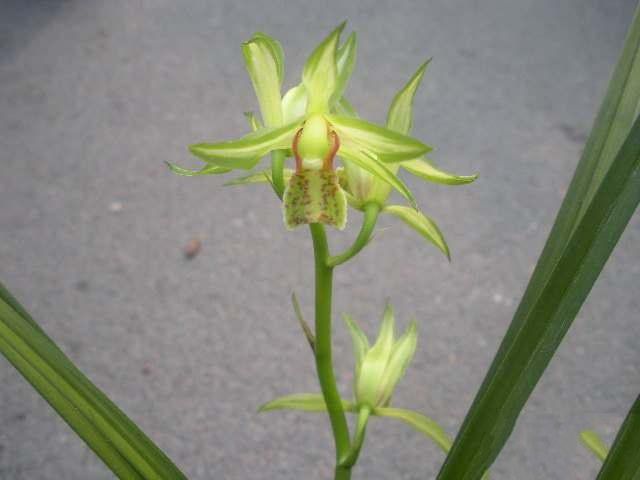What is the reason why orchids do not blossom? What if the orchid doesn't blossom?
There are four main reasons why the orchid does not bloom, which are lack of nutrients, lack of light, improper watering and temperature discomfort. In addition, one of the most basic flowering conditions is that at least 14 leaves need to be grown or cultured for more than four years before they can blossom.
The gentleman orchid is one of the flowers that many flower friends like to breed. The leaves are green all the year round when they are not blooming, and the leaves are shiny when they are properly maintained. Even if they do not blossom, they are also very good ornamental plants, but the flowering orchids are even more beautiful. The flowering also shows that the experience of our breeding methods is very appropriate, and it is a qualitative leap in our flower-raising level. So why does the gentleman orchid not blossom? What if the orchid doesn't blossom? Today, Hua'ergu will come and study with you.
1. Lack of nutrients
It is difficult for the gentleman orchid with insufficient nutrients to blossom. If the potted soil is too barren and we can not supplement the nutrients by means of fertilization, it will cause the orchid to grow thin, the leaf color is dim, yellowing and so on. First of all, this kind of soil nutrient conditions can not meet the normal growth of plants, so it is necessary to promote flower bud differentiation, and it is even more impossible to achieve flowering conditions.
Therefore, we usually need to regularly supplement some nutrients to make the plant grow more robust, and can achieve the basic conditions of flowering. Some fertilizers to promote flowering need to be added before flowering. At ordinary times, we can use some general organic fertilizer or special fertilizer to promote the growth of the plant. Before flowering, we need to add some phosphorus and potassium fertilizer, which can make the flower buds grow better and faster, and also make the flowers more bright and beautiful.
2. Lack of light
Magnolia is a kind of sunny plant, when the light is sufficient, the leaves will be shiny and the plants will be full of vitality, so it is easy to grow flowers. When there is not enough light, the leaves will grow only, and when they are serious, they will fall down or even yellow. this kind of environment is difficult to keep alive, and it is even more difficult to grow flowers.
Therefore, it is very good to give Magnolia a sunny growing environment. As long as it is not in the midday or afternoon of summer, it can be maintained in the sun at any time. Adequate photosynthesis can promote the synthesis of flowering nutrients. However, the need for semi-shade maintenance in summer is more appropriate, the general problem of planting is not big, potted plants should pay special attention to shade, otherwise it will lead to burns.
3. Improper watering
The cultivation of Cymbidium needs reasonable watering. Improper watering of Cymbidium near flowering period can easily lead to non-flowering, difficulty in flowering or early blossom. Improper watering can be divided into drought and water shortage caused by too little watering and stagnant water soaking and rotting roots caused by excessive watering. These two aspects will cause the magnolia not to blossom.
Therefore, watering the magnolia must be carried out in accordance with the principle of dry and wet, and it is also possible to moisturize the slightly moist potted soil all the time, but it must not be left unwatered for a long time and cause stagnant water and rotten roots. Once the rotten roots blossom, it is absolutely impossible. We must be very careful when watering! You can't raise a gentleman's orchid by watering it too casually.
4. Temperature discomfort
The best growth temperature of Cymbidium is generally 15-30 ℃. Too low or too high temperature will inhibit its normal growth and development. Flowering is one of the most direct manifestations of the normal growth of Cymbidium, indicating that the temperature at this time is very appropriate. On the contrary, when it comes to the flowering age, there are a lot of nutrients, enough light and reasonable watering, so it is the discomfort of the temperature.
Therefore, the flowering period of Cymbidium, we need to pay attention to maintain a good temperature, only the appropriate temperature can meet the conditions of flowering. In early spring, you can put it in a place with sufficient indoor light for maintenance, and in late spring and early summer, you can put it in a sunny place such as a balcony, which can effectively maintain a good temperature, and the orchid blossoms will naturally appear.
- Prev

The gentleman orchid grows very well, but what if it doesn't blossom?
The gentleman orchid grows very well, but what if it doesn't blossom?
- Next

Why do orchids blossom not fragrant when they go down the mountain to send spring?
Why do orchids blossom not fragrant when they go down the mountain to send spring?
Related
- Is the orchid suitable for indoor use? Is it good for the body?
- How to prevent the empty root of orchids?
- What to do after the crab claw orchid is withered?
- Why are the leaves of orchids always yellow? Fertilizing and watering.
- Can the root of the gentleman orchid be saved if it is rotten?
- Diagnosis and treatment of cotton-blowing beetle insects in Cymbidium
- There is a way for a gentleman's orchid to rot.
- What is the most suitable temperature and humidity for the orchid?
- How to raise a gentleman's orchid? Cultivation techniques of Cymbidium
- How to prepare the nutritive soil for the cultivation of Cymbidium

